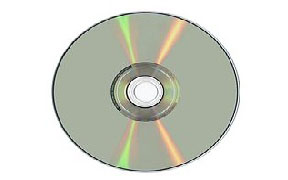The Compact Disc was the next major development in consumer portable storage. These discs are larger, at 4.7 inches in diameter, and can store 700 MB typically. Not all of these discs are re-writable, significantly increasing total sales and thereby the ubiquity of these units. Very similar to the compact disc is the DVD, which is a much higher capacity format of essentially the same item. They are able to hold approximately 4.7 GB to 17 GB depending on formats. Some software is still commonly distributed on DVDs.
The Blu-Ray disc is another improvement on the CD form factor, but perhaps a few years late. Instead of using typical red wavelength lasers to read the disc, it uses blue wavelength lasers, which allow for data to be compacted much more densely. The most common Blu-Ray formats can store 25 to 50 GB of data. However, the Blu-Ray drive hasn't caught on, largely due to increased cost, and inconvenience.
More and more companies are turning to digital software distribution. You can now download Microsoft Office, Video Games, even whole operating systems from various places on the internet. In the odd case that you do need to store something in a physical location, you can hold 64 GB of data in a Micro SDXC card, which is about the size of a thumb nail.
Despite the hazards of storing all of your eggs in one basket (or perhaps fewer baskets, in this case), the Cloud seems to be the future. Data is now stored in remote servers and parsed out to users at the discretion of whomever controls the servers. Owning a 'hard copy' of software is on its way out, and will soon be as intangible as the coding of the program itself. What do you think about the new content distribution methods? Tell us in our Forum




